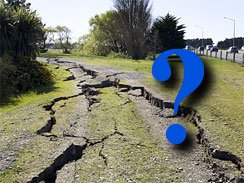In another ‘Ask the Experts’ section in the Press, geologists from GNS answer earthquake questions posed by readers of the newspaper.
 An excerpt (read in full here):
An excerpt (read in full here):
Ask an Expert: Faultline fears and P-waves
We have been told the potential size of an earthquake is proportionate to the length of the faultline that caused it. The September earthquake of 7.1 was generated on a fault of an unknown length because it was not known it was there.
However, my granddaughters have joined up the consequent quake dots on Quakemap and find that the original fault may, in fact, now be at least four or five times longer. The September quake may have been a foreshock leading up to a rupture of the much longer fault.
This fault could now run from Methven to offshore Canterbury. What would be the potential quake size of a fault this long? – Ray
You have some excellent points, but also some missing information. You are right to say the maximum earthquake capable of being generated by a fault movement will be proportional to its length.
Concerning the Greendale Fault that ruptured to produce the major component of the magnitude-7.1 September 2010 earthquake (there were at least two other smaller faults that ruptured as well), we are fairly confident the fault is not much longer than what ruptured in September, and it is unlikely it can produce another major earthquake until the strain builds up again over many thousands of years.
At the western end of the Greendale Fault it comes up to other faults along the edge of the foothills, so cannot be much longer in that direction. At the eastern end, the big cloud of aftershocks around Rolleston strongly suggests the fault stops there, but to check this some seismic soundings have been taken to check for any underground extension.
We expect the results of those seismic soundings in about three weeks, and these will be reported when we have them. – Dr Kelvin Berryman, Manager, natural hazards research platform, GNS Science